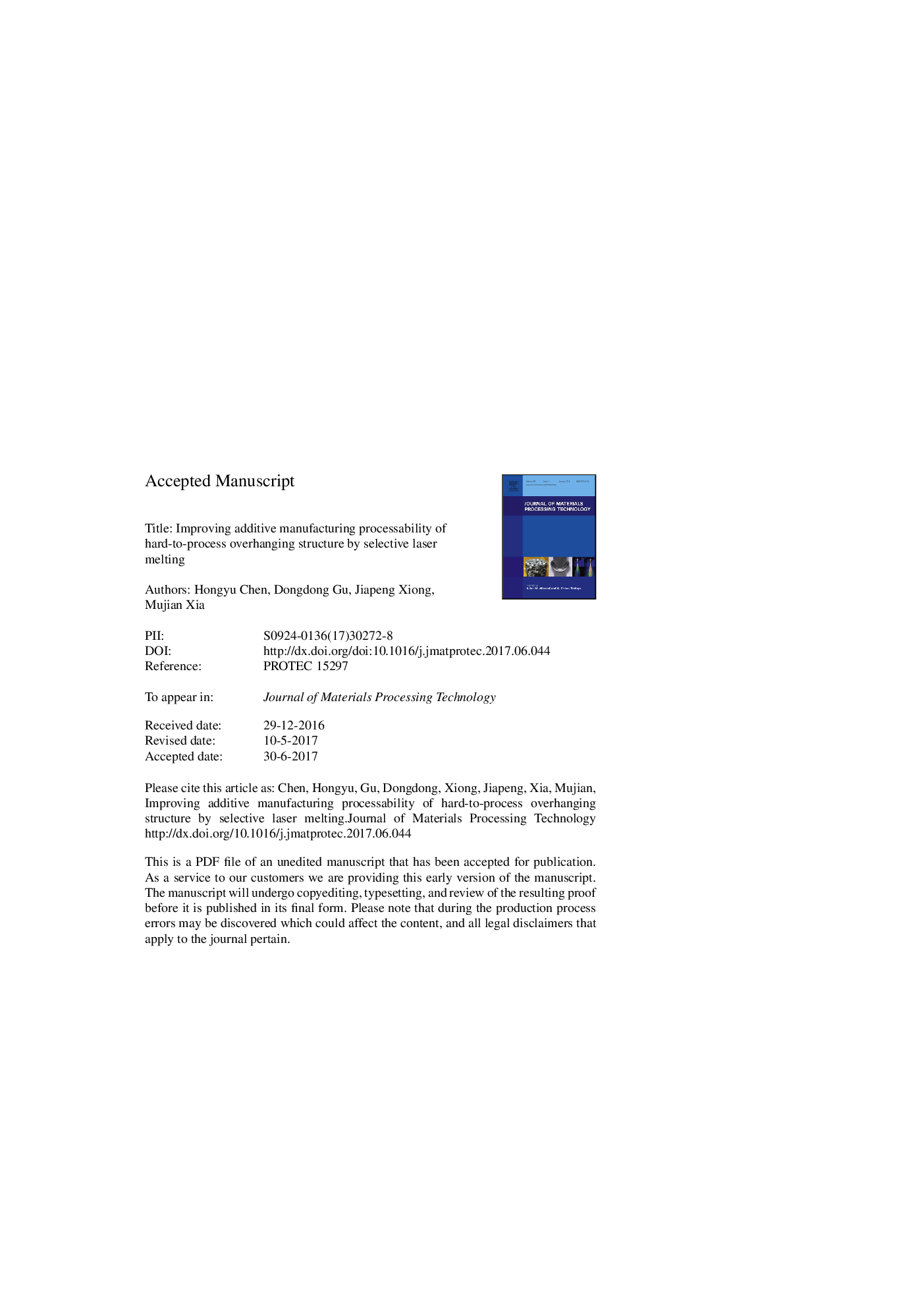| Article ID | Journal | Published Year | Pages | File Type |
|---|---|---|---|---|
| 5017668 | Journal of Materials Processing Technology | 2017 | 33 Pages |
Abstract
In this paper, a selective laser melting (SLM) physical model describing the melt pool dynamics and the response of downward-facing surface morphology evolution of overhanging structure under different laser processing conditions was proposed, in which an enormous difference in thermal conductivity and laser absorption capacity between the as-fabricated part and powder material was taken into consideration. The underlying thermal physical mechanism of the dross formation phenomenon during SLM preparing overhanging surface was revealed by numerical simulation analysis and experimental studies. It was found that both high and low laser volume energy density (Ï) resulted in an inferior downward-facing surface quality. As an optimal processing parameter (60-80 J/mm3) was settled, the overhanging structure obtained a relatively smooth downward-facing surface due to the sound melt pool dimension and steady melt flow behavior. The experimental studies were compared with the simulated results, showing a good agreement with the predictions obtained in the simulations. It was interesting to find that the variation rules of surface quality and densification level of overhanging structure with different Ï were exactly converse. As the Ï decreased from 80 J/mm3 to 60 J/mm3, the surface roughness could be reduced from 59 μm to 33 μm while, contrarily, the porosity was elevated from 3.2% to 8.4%. In order to fabricate complicated metal parts with lower risk, four solutions for improving the processability of hard-to-process overhanging structure were provided.
Related Topics
Physical Sciences and Engineering
Engineering
Industrial and Manufacturing Engineering
Authors
Hongyu Chen, Dongdong Gu, Jiapeng Xiong, Mujian Xia,
